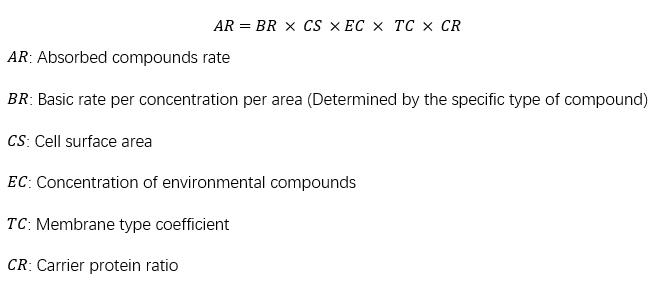The conversion of phosphate and ammonia into environmental compounds has been proposed for a long time, and now there is a passive phosphate and ammonia acquisition in the game.
In the current game, environmental compounds exist as a condition that determines the rate of biochemical processes, which is more suitable for gases such as oxygen and carbon dioxide in simple organisms. Gas molecules can directly penetrate the cell membrane, they spread quickly to cells. But ions and macromolecules cannot.
Cells facilitate diffusion and active transport of ions and macromolecules on the cell membrane, which means that the surface area of a cell will directly affect its ability to utilize ions and macromolecular environmental compounds, which will affect the actual amount of raw materials that can be utilized in various processes of the cell.
One idea is to set up environmental compounds and ordinary compounds of the same compound, and connect them through an absorption process. The rate of absorption process mainly depends on the concentration of environmental compounds and the surface area of cells. In addition to these, there can also be membrane types and membrane proteins (carrier protein ratio?).

The absorption process converts environmental compounds into ordinary compounds for storage or directly participates in other physiological processes in cells. If the cells are large enough, players need to balance the size and surface area of the cells. If there is a membrane protein ratio, players may also need to pay attention to the absorption ratios of various compounds, which may promote specialization.

In addition to paying attention to the shape of cells, special extracellular structures can also be placed to increase cell surface area at the same size. For example, Microvillus of animal cells and Choanoflagellate, roothairs of plant cells.